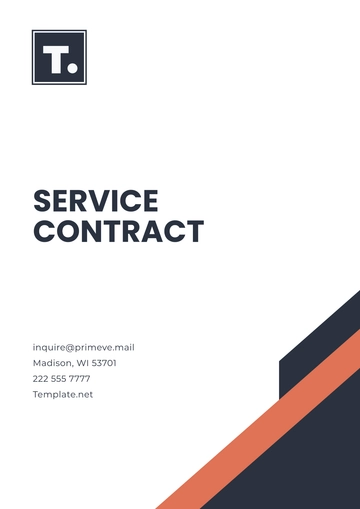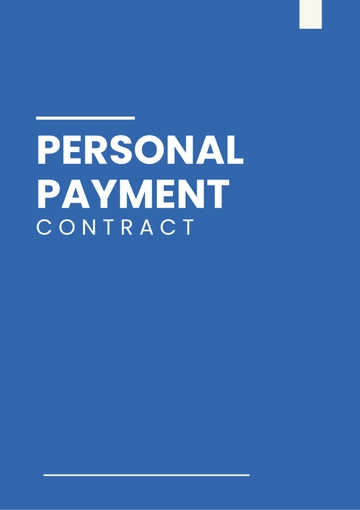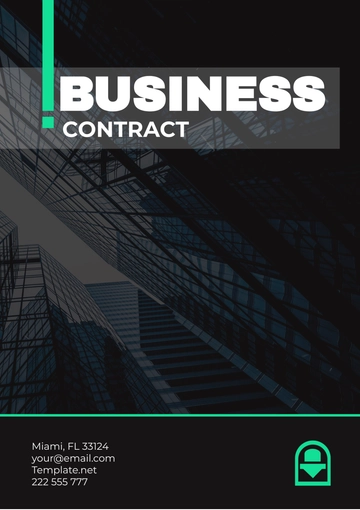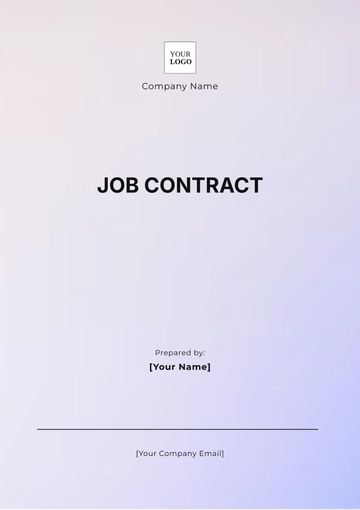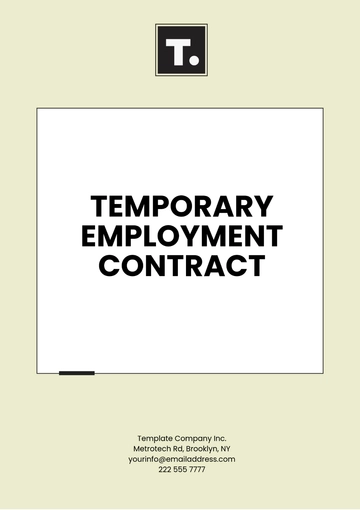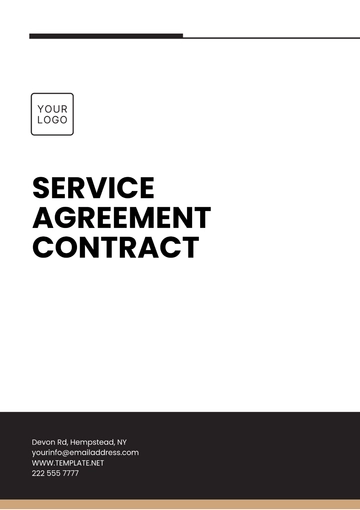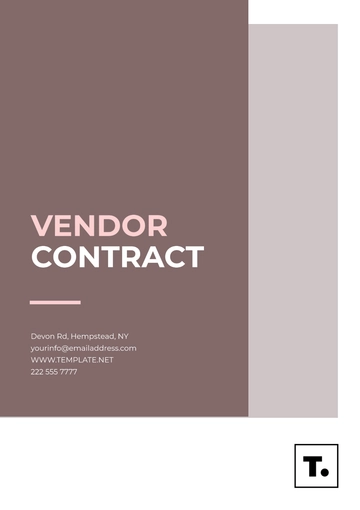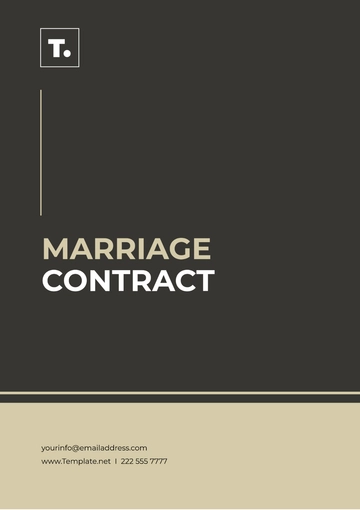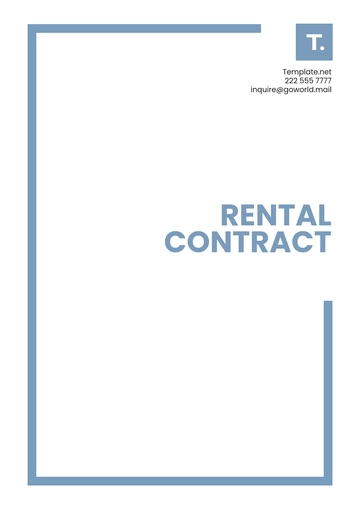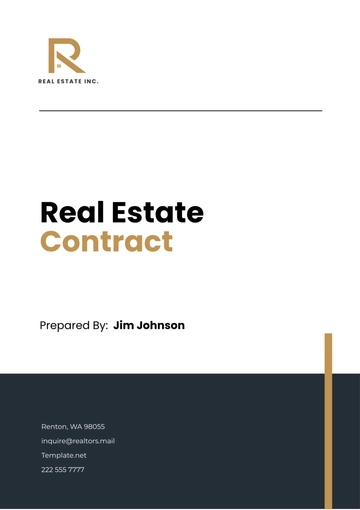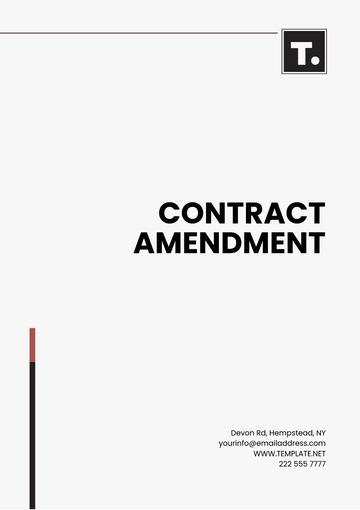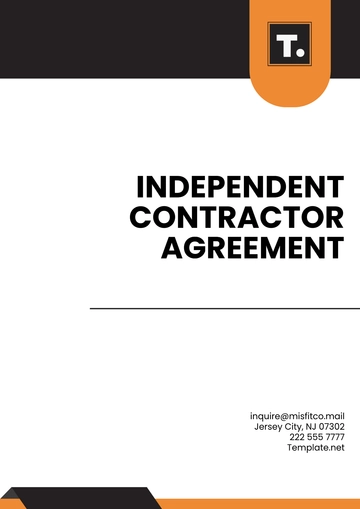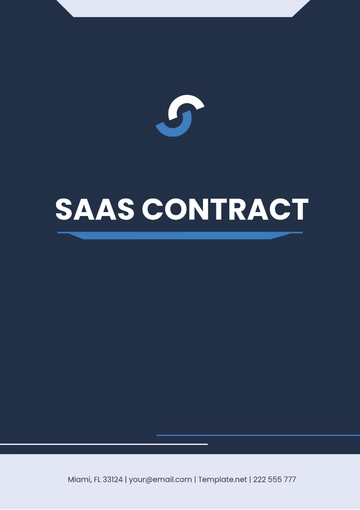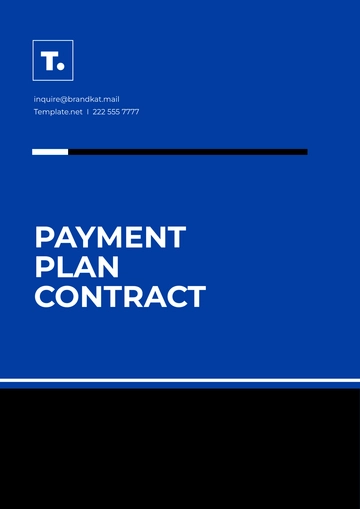Free Legal Contractual Obligations Compliance Report
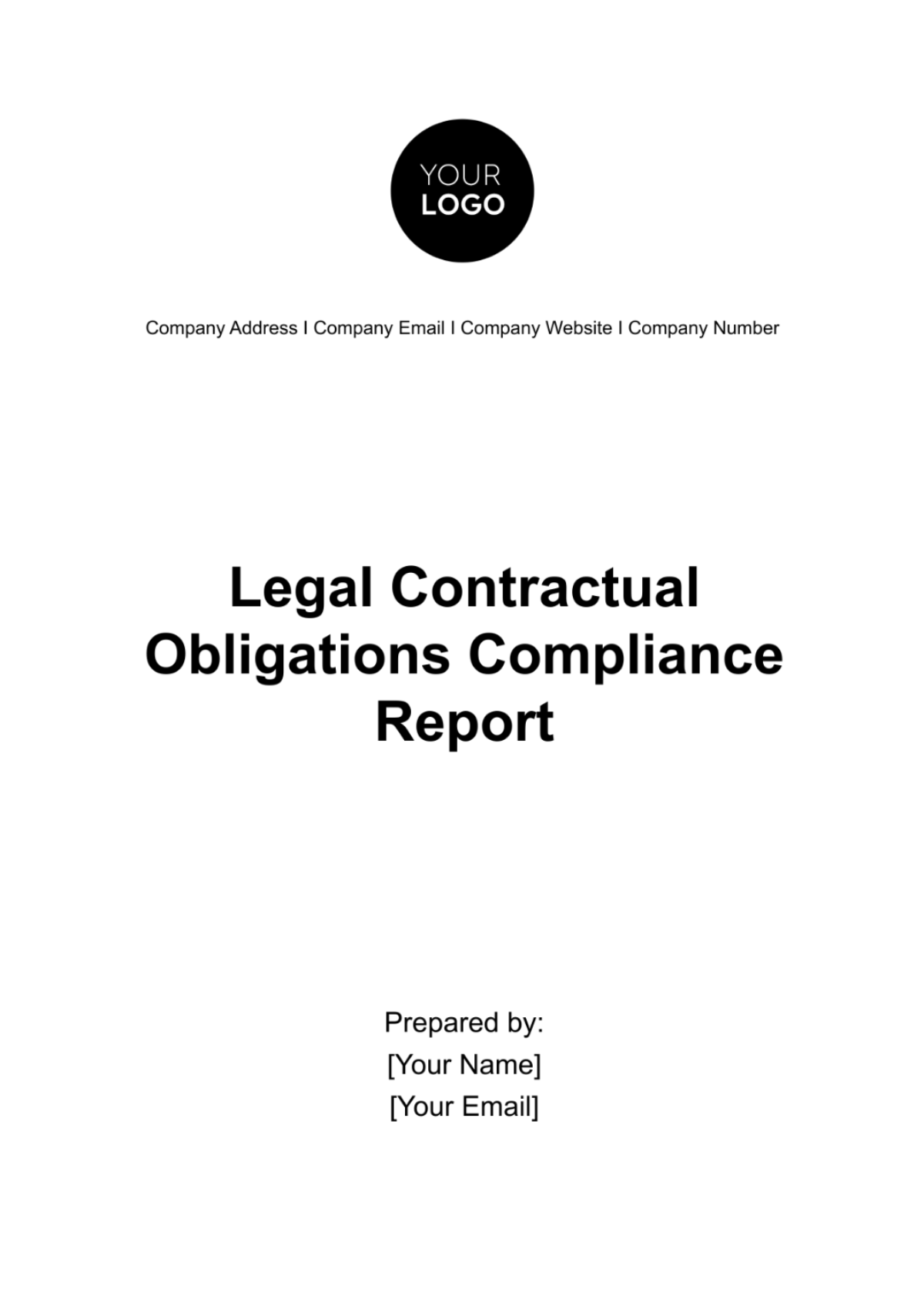
I. Introduction
This Legal Contractual Obligations Compliance Report serves as a vital tool for evaluating the degree to which [Your Company Name] has upheld its legal commitments within the designated reporting period, spanning from [Start Date] to [End Date]. As an essential aspect of corporate governance, compliance with contractual obligations ensures the maintenance of trust and accountability among stakeholders. This report aims to offer a comprehensive analysis of [Your Company Name]'s adherence to various agreements, contracts, and legal obligations, shedding light on areas of exemplary compliance as well as those requiring attention and improvement.
II. Scope
A. Service Level Agreements (SLAs)
Service Level Agreements (SLAs) form the cornerstone of [Your Company Name]'s commitments to its clients and stakeholders. These contracts delineate the specific services to be provided, performance metrics, and remedies in the event of non-compliance. By assessing compliance with SLAs, [Your Company Name] ensures the consistent delivery of high-quality services and maintains robust relationships with its clientele.
B. Vendor Contracts
Vendor contracts encompass a diverse range of agreements entered into by [Your Company Name] with external suppliers and vendors. These contracts govern the procurement of goods and services essential for the company's operations. Compliance with vendor contracts ensures transparency, efficiency, and cost-effectiveness in procurement processes while mitigating risks associated with supplier relationships.
C. Client Agreements
Client agreements represent the foundation of [Your Company Name]'s partnerships with its diverse clientele. These agreements outline the terms and conditions of engagement, including service specifications, pricing structures, and dispute resolution mechanisms. By upholding compliance with client agreements, [Your Company Name] fosters trust, loyalty, and long-term business relationships with its clients.
D. Lease Agreements
Lease agreements play a crucial role in facilitating [Your Company Name]'s access to essential physical assets, such as office spaces, warehouses, and equipment. These contracts delineate the terms of occupancy, rental payments, maintenance responsibilities, and lease renewal options. Adhering to lease agreements ensures efficient utilization of resources and minimizes legal and financial risks associated with property management.
E. Licensing Agreements
Licensing agreements govern the use of [Your Company Name]'s intellectual property assets by third parties, including trademarks, patents, and copyrights. These agreements establish the terms of use, royalties, and restrictions on the reproduction or distribution of intellectual property. Compliance with licensing agreements safeguards [Your Company Name]'s intellectual property rights and ensures fair compensation for its creative endeavors.
F. Employment Contracts
Employment contracts delineate the terms and conditions of employment for [Your Company Name]'s workforce, including rights, responsibilities, and benefits. These contracts cover aspects such as job descriptions, compensation packages, confidentiality agreements, and termination procedures. Adhering to employment contracts fosters a harmonious work environment, promotes employee satisfaction, and mitigates legal risks associated with labor disputes.
III. Compliance Overview
This section offers a succinct summary of [Your Company Name]'s compliance status across various contractual domains, providing stakeholders with an at-a-glance assessment of the company's performance in meeting its legal obligations.
A. SLA Compliance
[Your Company Name] has demonstrated robust performance in meeting its Service Level Agreements (SLAs) during the reporting period. The compliance analysis reveals that [00%] of SLAs were successfully met, while [00%] were exceeded, reflecting the company's commitment to delivering exceptional service standards. However, [00%] of SLAs were not fully met, indicating areas for improvement and optimization in service delivery processes.
B. Vendor Contract Compliance
The assessment of Vendor Contract Compliance indicates a satisfactory level of adherence to contractual obligations. [00%] of vendor contracts were found to be compliant, reflecting [Your Company Name]'s effective management of supplier relationships. However, [00%] of contracts exhibited non-compliance issues, primarily stemming from discrepancies in delivery schedules, quality standards, or pricing terms.
C. Client Agreement Compliance
[Your Company Name] has demonstrated commendable compliance with its Client Agreements, with [00%] of contracts meeting or exceeding stipulated requirements. This highlights the company's dedication to fulfilling client expectations and delivering value-added services. Nonetheless, [00%] of client agreements were identified as non-compliant, necessitating corrective actions to address underlying issues and enhance client satisfaction.
D. Lease Agreement Compliance
The evaluation of Lease Agreement Compliance indicates a high level of adherence to contractual terms and conditions. [00%] of lease agreements were found to be compliant, reflecting [Your Company Name]'s diligent management of leased assets and properties. However, [00%] of agreements exhibited minor discrepancies or non-material breaches, requiring proactive measures to ensure continued compliance and mitigate associated risks.
E. Licensing Agreement Compliance
[Your Company Name] has maintained strong compliance with its Licensing Agreements, with [00%] of contracts being fully compliant with agreed-upon terms and conditions. This underscores the company's commitment to protecting its intellectual property rights and fostering mutually beneficial partnerships with licensees. Nevertheless, [00%] of licensing agreements showed deviations from prescribed guidelines, necessitating remedial actions to uphold contractual integrity and safeguard intellectual assets.
F. Employment Contract Compliance
The assessment of Employment Contract Compliance reveals a robust adherence to legal and contractual obligations governing employee relations. [00%] of employment contracts were found to be compliant, reflecting [Your Company Name]'s commitment to fair labor practices and employee welfare. However, [00%] of contracts exhibited minor deviations or non-material breaches, highlighting the importance of ongoing compliance monitoring and proactive HR management strategies.
VI. Detailed Compliance Analysis
We provided a comprehensive examination of each contractual domain, offering detailed insights into compliance performance, root causes of non-compliance, and remedial actions undertaken or proposed by [Your Company Name].
A. SLA Compliance Analysis
SLA Metrics | Compliance Status | Key Findings |
|---|---|---|
SLAs Met | [00%] | Majority of SLAs were successfully met, demonstrating adherence to service delivery commitments. |
SLAs Exceeded | [00%] | Certain SLAs were exceeded, reflecting proactive efforts to surpass client expectations. |
SLAs Not Met | [00%] | Some SLAs were not fully met, primarily due to resource constraints or unforeseen challenges. |
Root Causes of Non-Compliance:
Insufficient resource allocation
Inadequate capacity planning
Technical constraints or system failures
Communication breakdowns with clients
Corrective Actions:
Resource reallocation to high-priority tasks
Implementation of process improvements
Enhanced communication channels with clients
Review and revision of SLA metrics for alignment with business objectives
B. Vendor Contract Compliance Analysis
Compliance Category | Compliance Status | Key Findings |
|---|---|---|
Compliant Contracts | [00%] | Majority of vendor contracts were compliant, indicating effective vendor management practices. |
Non-Compliant Contracts | [00%] | Some contracts exhibited non-compliance issues, primarily related to delivery delays or quality issues. |
Root Causes of Non-Compliance:
Supplier performance issues
Contractual ambiguities or discrepancies
Inadequate vendor oversight or monitoring
Changes in market conditions or supplier capabilities
Corrective Actions:
Escalation of issues to vendor management
Renegotiation of contract terms
Implementation of performance improvement plans
Diversification of supplier base to mitigate risks
C. Client Agreement Compliance Analysis
Compliance Category | Compliance Status | Key Findings |
|---|---|---|
Compliant Agreements | [00%] | Majority of client agreements were compliant, reflecting [Your Company Name]'s commitment to client satisfaction. |
Non-Compliant Agreements | [00%] | Some agreements exhibited deviations from prescribed terms, necessitating corrective actions. |
Root Causes of Non-Compliance:
Misalignment of expectations between parties
Changes in client requirements or project scope
Inadequate contract management or oversight
Communication gaps between sales and delivery teams
Corrective Actions:
Re-alignment of deliverables with client expectations
Contract renegotiation or amendment
Enhanced project management and communication protocols
Training and development for client-facing staff
D. Lease Agreement Compliance Analysis
Compliance Category | Compliance Status | Key Findings |
|---|---|---|
Compliant Agreements | [00%] | The majority of lease agreements were compliant, reflecting diligent property management practices. |
Non-Compliant Agreements | [00%] | Some agreements exhibited minor discrepancies or non-material breaches, requiring corrective measures. |
Root Causes of Non-Compliance:
Administrative errors or oversights
Failure to adhere to lease renewal deadlines
Disputes over maintenance responsibilities
Changes in occupancy or property use
Corrective Actions:
Review and update lease management processes
Establishment of lease compliance tracking mechanisms
Engage in proactive communication with landlords or lessors
Conduct periodic audits of leased properties
E. Licensing Agreement Compliance Analysis
Compliance Category | Compliance Status | Key Findings |
|---|---|---|
Compliant Agreements | [00%] | The majority of licensing agreements were compliant, reflecting effective management of intellectual property assets. |
Non-Compliant Agreements | [00%] | Some agreements exhibited deviations from licensing terms, necessitating corrective actions to protect intellectual assets. |
Root Causes of Non-Compliance:
Unauthorized use or reproduction of licensed content
Failure to pay royalties or license fees
Disputes over territorial or usage rights
Changes in licensing terms or ownership
Corrective Actions:
Enforcement of licensing terms and restrictions
Legal action against infringing parties
Negotiation with licensees to resolve disputes
Regular audits of licensing agreements and usage
F. Employment Contract Compliance Analysis
Compliance Category | Compliance Status | Key Findings |
|---|---|---|
Compliant Contracts | [00%] | The majority of employment contracts were compliant, reflecting [Your Company Name]'s commitment to fair labor practices. |
Non-Compliant Contracts | [00%] | Some contracts exhibited minor deviations or non-material breaches, necessitating corrective actions to ensure compliance. |
Root Causes of Non-Compliance:
Misinterpretation of employment terms
Failure to adhere to labor laws or regulations
Discrepancies in compensation or benefits
Employee misconduct or disciplinary issues
Corrective Actions:
Review and update employment contract templates
Provide training on legal and HR policies
Implement performance management systems
Conduct regular compliance audits and reviews
V. Compliance Monitoring and Reporting Mechanisms
We outlined the processes and procedures established by [Your Company Name] to monitor and report compliance with contractual obligations effectively. By implementing robust monitoring and reporting mechanisms, [Your Company Name] ensures ongoing adherence to legal commitments and timely identification of non-compliance issues.
A. Compliance Monitoring Processes
[Your Company Name] employs a systematic approach to monitor compliance with contractual obligations across all relevant domains. Key aspects of the compliance monitoring processes include:
Regular Reviews: Conducting periodic reviews of contract terms and performance metrics to assess compliance status. These reviews involve evaluating the extent to which [Your Company Name] is meeting its contractual obligations and identifying any areas of deviation or non-compliance.
Performance Metrics Tracking: Tracking key performance indicators (KPIs) and SLA metrics to measure adherence to contractual obligations. [Your Company Name] utilizes advanced tracking systems and software tools to monitor service delivery metrics, vendor performance, and other relevant parameters.
Vendor Performance Evaluation: Evaluating vendor performance against agreed-upon benchmarks and service level expectations. [Your Company Name] conducts regular assessments of vendor performance to ensure that contracted services are delivered in accordance with established standards.
Client Feedback Analysis: Analyzing client feedback and satisfaction scores to gauge compliance with service delivery standards. [Your Company Name] actively solicits feedback from clients and incorporates this input into its compliance monitoring processes to continuously improve service quality and meet client expectations.
B. Compliance Reporting Procedures
[Your Company Name] has established clear reporting procedures to communicate compliance status to relevant stakeholders. The reporting procedures include:
Regular Compliance Reports: Generating periodic compliance reports summarizing adherence to contractual obligations and highlighting areas for improvement. These reports provide stakeholders with a comprehensive overview of [Your Company Name]'s compliance performance, including achievements, challenges, and action plans.
Escalation Protocols: Implementing escalation protocols to address significant compliance issues and ensure timely resolution. [Your Company Name] has defined escalation pathways for reporting and resolving compliance-related concerns, ensuring that issues are escalated to the appropriate level of management for prompt resolution.
Stakeholder Communication: Facilitating communication with stakeholders, including clients, vendors, and internal teams, regarding compliance status and corrective actions. [Your Company Name] maintains open lines of communication with all relevant parties to foster transparency, address concerns, and collaborate on solutions to improve compliance.
Performance Dashboards: Utilizing performance dashboards and data visualization tools to provide real-time insights into compliance metrics and trends. [Your Company Name] leverages advanced analytics and reporting technologies to create interactive dashboards that enable stakeholders to monitor compliance performance in real-time and make data-driven decisions.
VI. Conclusion
This Legal Contractual Obligations Compliance Report provides a comprehensive overview of [Your Company Name]'s compliance status with various agreements, contracts, and legal commitments. Through diligent monitoring, analysis, and reporting, [Your Company Name] demonstrates its commitment to upholding ethical standards, maintaining regulatory compliance, and mitigating legal risks. By addressing areas of non-compliance and implementing corrective actions, [Your Company Name] strives to strengthen its corporate governance practices, foster trust among stakeholders, and ensure sustained business success.
This report serves as a valuable resource for guiding decision-making, enhancing transparency, and fostering accountability within [Your Company Name]. As [Your Company Name] continues to evolve and adapt to changing business environments, it remains dedicated to upholding the highest standards of integrity, professionalism, and legal compliance.
For further inquiries or clarification regarding the compliance report, please contact:
[Your Company Name]
[Your Company Address]
[Your Company Number]
Prepared by: [Your Name]
Position: [Your Position]
- 100% Customizable, free editor
- Access 1 Million+ Templates, photo’s & graphics
- Download or share as a template
- Click and replace photos, graphics, text, backgrounds
- Resize, crop, AI write & more
- Access advanced editor
Efficiently track and manage contractual obligations with our Legal Contractual Obligations Compliance Report Template available on Template.net. This editable and customizable template helps ensure adherence to contractual commitments. Easily tailor it to your specific requirements using our Ai Editor Tool. Streamline compliance reporting and mitigate risks effectively. Stay on top of your contractual obligations with this comprehensive and user-friendly template.
You may also like
- Rental Contract
- Contractor Contract
- Contract Agreement
- One Page Contract
- School Contract
- Social Media Contract
- Service Contract
- Business Contract
- Restaurant Contract
- Marketing Contract
- Real Estate Contract
- IT Contract
- Cleaning Contract
- Property Contract
- Supplier Contract
- Partnership Contract
- Food Business Contract
- Construction Contract
- Employment Contract
- Investment Contract
- Project Contract
- Payment Contract
- Student Contract
- Travel Agency Contract
- Startup Contract
- Annual Maintenance Contract
- Employee Contract
- Gym Contract
- Event Planning Contract
- Personal Contract
- Nursing Home Contract
- Law Firm Contract
- Work from Home Contract
- Software Development Contract
- Maintenance Contract
- Music Contract
- Amendment Contract
- Band Contract
- DJ Contract
- University Contract
- Salon Contract
- Renovation Contract
- Photography Contract
- Lawn Care Contract


